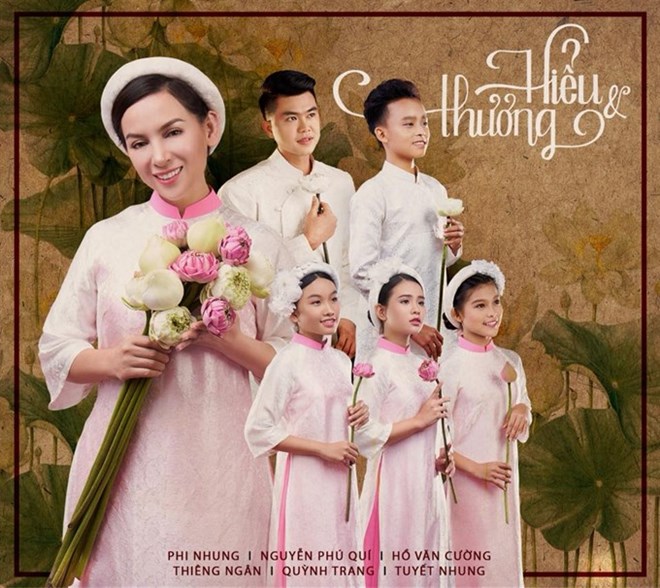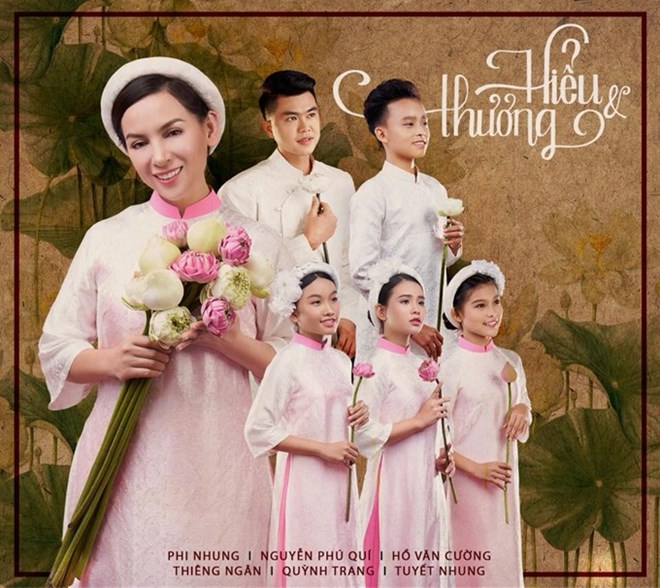



Cover of the album Hieu và Thuong (Understanding and Love) by
Vietnamese-American singer Phi Nhung (left) (Photo from the artist’s
facebook)
The album, Hieu va Thuong (Understanding
and Love), sends messages on love, sharing and compassion. It includes nine
songs in bolero, pop and folk contemporary music.
Featured songs are performed by Nhung and child singers Ho Van Cuong, Quynh
Trang, Pham Tuyet Nhung and Pham Thien Ngan.
Nhung was born in 1972 in the Tay Nguyen (Central Highlands) province of Pleiku
(now Gia Lai province). Her father was an American serviceman. She moved to
live in the US as part of its immigration policy towards Amerasians.
She began her career in 1989 in California and has worked with American and
French entertainment centres and music producers.
In 2005, she returned to HCM City and has released more than 200 solo and group
albums. Nhung runs her own charity fund for poor children.
Her concert, Phi Nhung Fan Meeting 2018, will take place at HCM City Youth
Cultural House on January 13.
The open-air event will feature dozens of guest singers, including pop star
Phuong Thanh and pop bands MTV and 5 Dong Ke.
Nhung will also pay for several hundred fans living in poor districts of
southern provinces to attend the event.
"I love singing for my young fans in my homeland," said Nhung.
"My daughter from the US will attend the concert and learn how much
Vietnamese fans love me," she added.
The show begins at 8pm at 4 Pham Ngoc Thach street, District 1. Entrance is
free.
More than 7,000 guests are expected to attend.
Source: VNA